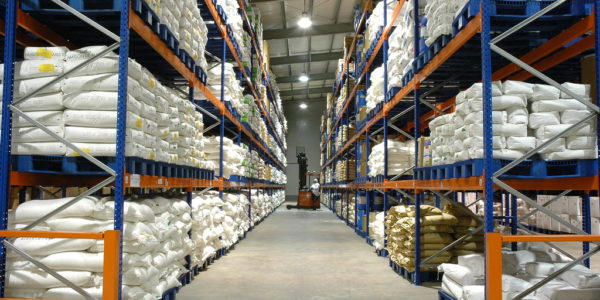Automation has been a feature in warehouses for years. Walmart and Amazon both have robust robotic systems in their warehouses, speeding up picking and packing. Even so, Amazon had to bring in 150,000 seasonal workers just to keep up at Christmastime.
With continuing labor shortages and steady increases in ecommerce, automation is no longer optional in warehouses.
Warehouse robots
Warehouses can be challenging for robots, though. Most current warehouse automation systems use a grid to locate items and let automated boxes zip around gathering items. Typically, human workers transfer the goods into packages for shipping or pickup. Finding the items is often a task built into the system, but figuring out how to pick up many different items is hard for robots.
Specialized tools are beginning to be part of the plan. Stretch, from Boston Dynamics, seen below, was developed in consultation with DHL specifically to unload trucks.
Some warehouse robot systems have interchangeable grasping or gripping tools depending on their needs, but many continue to be essentially boxes on wheels. They may rise up under a bin and carry the entire bin to a human worker.
Human workers
Software company Plus One Robotics did a study to figure out whether automation could entirely replace human workers. They don’t favor trying to avoid warehouse automation. “Warehouse operators and logistics companies face a critical struggle to meet the ever-increasing consumer demands that far outweigh anything that could be met with human manpower alone,” New Equipment Digest concluded.
So it’s good news that much of the work in warehouses can be automated. But huyman beings will still be required. In fact, Plus One believes that the number of human workers in warehouses will increase significantly.
Increasing automation has brought the fulfillment time for ecommerce down during the pandemic. The increasing speed and convenience have increased demand, which means more available jobs.
“Plus One was founded on the notion that people and robots working together is the best solution in the warehouse,” said Erik Nieves, CEO and co-founder, Plus One Robotics. “Our goal has been to help humans move to value-added positions by building software that functions intelligently on its own, but also recognizing that no fully autonomous software solution will be perfect on its own.”
Automation is only as good as its drive and control system. When you need support or service for Indramat motion control systems, we can help. Contact us for immediate assistance.
